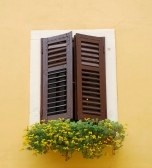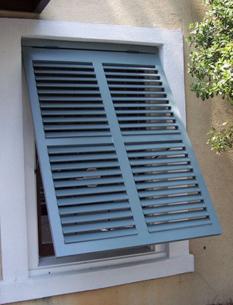Comments
For hundreds of years homes were built recognizing the patterns of nature. After WWII, when air conditioning came along and energy was cheap, we lost our way. Homebuilders began relying on mechanical systems for comfort and renovators of older homes began neglecting or removing features that provided free cooling and heating.
Here’s a sample of some of these historic home elements that were central to providing comfort during all seasons. If you have some of these features in your home - use them if they work and restore them if they don’t.

Cupolas:
Like the features below, cupolas are as functional as they are decorative. As warm air rises cupolas allow hot air to escape at the high points in the house while bringing up cooler air from below. They also create a steady air-flow even when there is no breeze outside. In some homes, cupolas provide soft, indirect sunlight that illuminates the home without bringing in the heat. For winter, you want to make sure the cupola windows are well-sealed and properly weatherstripped. Weatherstripping is now becoming a standard for all window restoration.
Popular on Federal style homes, exterior shutters provide protection from the sun in summer and from frigid night air in the winter. The first step to keep your house cool in summer is keeping the hot sun out. In the morning, gable windows on the top floor and basement windows can be opened. This creates a stack effect which exhausts hot air through the top floors and brings up cooled air from the basement. Closing the main floor shutters during the day keeps the main floors cool. The shutters are then opened in the evening to let in the cool night air. In winter, opening the shutters during the day can let the low, warm sunlight into the house. At night, closing the shutters helps keep the warm air inside where it belongs.
Overhanging soffits / eaves:
For centuries nearly all home styles included deep overhanging soffits and eaves. Deep soffits shade the windows from the high summer sun. In the winter as the sun arcs lower in the sky, light and heat energy pass through the windows helping to warm the house, lower heating bills, and provide much-needed natural daylight.
Common in southern and tropical climates, louvered exterior shutters hinge from the top and provide shade from the sun while allowing airflow and light inside. By orienting the house toward the prevailing winds, even slight breezes can be used to create comfortable cross-ventilation. They also help keep out rain during tropical summer storms.
Matt Grocoff, Esq. LEED is host of Greenovation.TV, a contributor to The Environment Report on Public Radio, the green renovation expert for Old House Web, a net zero consultant and a sought after lecturer. His home is America’s oldest net-zero energy home and was called “Sustainable Perfection” by The Atlantic, honored as one of USA Today’s “Seven Best Green Homes of 2010″ and Preservation Project of the Year. He has been featured in hundreds of publications and news shows including Washington Post, Detroit Free Press, Preservation Magazine, Solar Today, Fox Business News, Huffington Post and more. Join him on Twitter and Facebook










